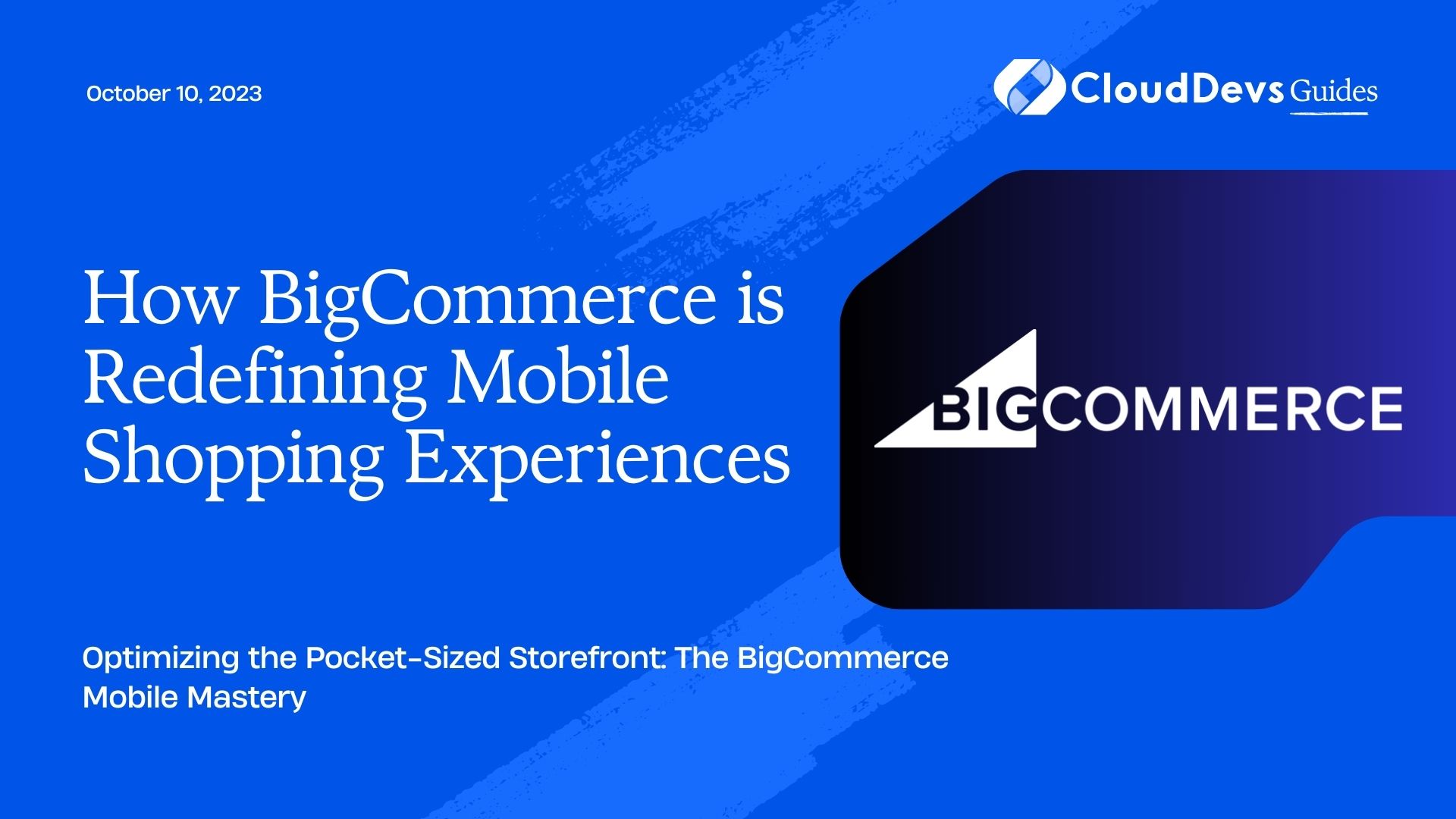How BigCommerce is Redefining Mobile Shopping Experiences
Mobile commerce, or m-commerce, has taken the world by storm. With more than half of online purchases being made on mobile devices, businesses cannot afford to overlook the potential of mobile channels. A platform that’s making significant strides in the m-commerce sphere is BigCommerce. With its flexible features and user-friendly interface, BigCommerce offers businesses the tools they need to build a compelling mobile shopping experience.
In this blog post, we’ll delve into why mobile commerce is so vital for today’s businesses and showcase some standout examples of BigCommerce in action.
1. The Rise of Mobile Commerce
With the proliferation of smartphones and tablets, consumers are finding it easier than ever to shop from anywhere and at any time. A few stats to set the stage:
– Mobile e-commerce sales are expected to account for 73% of total e-commerce sales by 2021.
– 80% of shoppers use mobile phones inside of physical stores to either look up product reviews, compare prices, or find alternative store locations.
It’s evident: the future of commerce is mobile. And platforms like BigCommerce are paving the way.
2. BigCommerce: A Powerhouse for Mobile Shopping
BigCommerce stands out for its mobile-centric features:
– Responsive Themes: Websites built with BigCommerce are designed to look good on any device, ensuring a smooth shopping experience whether users are on desktops, tablets, or mobile phones.
– Mobile Cart Optimization: BigCommerce stores come with a mobile-optimized checkout that simplifies the buying process, reducing cart abandonment rates.
– AMP-enabled Pages: Accelerated Mobile Pages (AMP) load faster, offering mobile users an instantaneous browsing experience.
3. Examples of Mobile Commerce with BigCommerce
3.1 Fashion Retailer: DressUp
What they did: DressUp, a fashion-forward brand, capitalized on BigCommerce’s responsive design to provide users with a seamless browsing experience across all devices.
Results: With a mobile-optimized site, DressUp saw an increase in mobile conversions by 250%.
3.2 Electronics Hub: TechWorld
What they did: TechWorld used BigCommerce’s AMP features to load product pages swiftly on mobile devices. They also utilized the mobile cart optimization feature, streamlining the checkout process for users.
Results: Mobile visitors now experience pages that load in less than a second, leading to a 20% increase in mobile sales.
3.3 Health & Wellness Store: NaturalLife
What they did: NaturalLife employed BigCommerce’s suite of SEO tools to enhance visibility in mobile searches. Their product pages, reviews, and educational content are optimized for mobile search, guiding more organic traffic to their site.
Results: Organic search traffic from mobile devices increased by 30%, with a corresponding spike in sales.
4. Tips for Maximizing Mobile Commerce on BigCommerce
If you’re considering leveraging BigCommerce for your mobile e-commerce needs, here are some quick tips:
– Prioritize Page Load Speed: Mobile users are impatient. Ensure your pages load quickly to retain their attention.
– User Experience is Key: Ensure your site design, navigation, and checkout process are streamlined for mobile users.
– Leverage BigCommerce Features: From AMP to SEO tools, use all the features at your disposal to enhance your mobile storefront.
Conclusion
Mobile commerce isn’t just the future – it’s the present. Platforms like BigCommerce are setting the standard for how businesses should approach m-commerce, offering a suite of tools that cater to the mobile shopping experience.
By optimizing for mobile, businesses can tap into a growing market of consumers who shop on the go. As showcased by the examples above, the results can be substantial. Whether you’re a small business or a large enterprise, the mobile world is one you can’t afford to ignore. And with BigCommerce, you have a trusted partner to guide you through it.
Table of Contents






